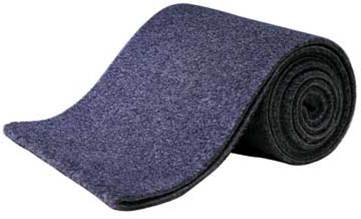
Carpet

Consider environmentally-friendly alternatives when purchasing carpet and underlay.
Most carpets are synthetic — nylon, polyester or acrylic — all of which are petroleum-based products and contribute to environmental degradation. In addition, these synthetic fibres are backed by materials such as latex, polyvinyl chloride, 4-phenylcylclohexene or polyurethane, which are also petroleum-based, as are the adhesives that are used to secure carpeting to floors in some applications and the latex padding used in others.
Lay pressure-adhesive individual carpet tiles, allowing replacement of only those that become worn.
Other alternatives include polished wooden or concrete floors, cork and bamboo flooring.
If you have old carpet which is fairly clean and in good condition, consider donating it or on-selling it.
Old carpet pieces can be used in the garden as mulch, as weed matting between rows of plants and as a cover for your compost bin/worm farm.
Cut up carpet for use as floor mats in hallways, in cars or to line the car boot.
Cut small circles to place under the feet of heavy furniture.
Take old mats and rugs on camping holidays to use as a door-mat or flooring.
Use as animal bedding.
Check with the manufacturer if there is a carpet-recycling programme.
If carpet is unable to be reused, take to the local transfer station.